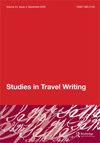Railway experiences of Poles and Serbs in China before 1949: an analysis of travel writings about the Middle Kingdom
Q2 Arts and Humanities
引用次数: 0
Abstract
ABSTRACT The railway is often characterised as one of the crucial innovations of the nineteenth century which transformed patterns of space and time, exposed people to the mechanical power of the industrial revolution, led to the formation of a panoramic perception of the world, and changed the economic circulation. In China, the new technology was adopted later than in Europe and America, and its development took place in a semi-colonial context. As such, the railway experience took on a different dimension there. Based on a corpus of Polish and Serbian travel writings about China, this article examines how travellers represented railways in the Middle Kingdom. Five main topics are discussed: (1) the railway as an icon of modernity; (2) the railway as a “purely European invention”; (3) Polish and Serbian patriotism as linked to the Chinese Eastern Railway; (4) the train as a space of interactions; (5) panoramic visions of China.1949年前波兰人和塞尔维亚人在中国的铁路经历:对中国游记的分析
铁路经常被认为是19世纪的重要创新之一,它改变了空间和时间的模式,使人们接触到工业革命的机械力量,形成了对世界的全景感知,并改变了经济循环。在中国,新技术的采用晚于欧洲和美洲,其发展发生在半殖民地的背景下。因此,在那里,铁路体验呈现出不同的维度。本文以波兰和塞尔维亚关于中国的旅游文献为基础,考察了旅行者如何代表中国的铁路。本文主要讨论了以下五个主题:(1)铁路作为现代性的象征;(2)铁路是“纯粹欧洲人的发明”;(3)与中国东方铁路有关的波兰和塞尔维亚爱国主义;(4)列车作为互动空间;(5)中国全景。
本文章由计算机程序翻译,如有差异,请以英文原文为准。
求助全文
约1分钟内获得全文
求助全文
来源期刊

Studies in Travel Writing
Arts and Humanities-Literature and Literary Theory
CiteScore
0.40
自引率
0.00%
发文量
13
期刊介绍:
Founded in 1997 by Tim Youngs, Studies in Travel Writing is an international, refereed journal dedicated to research on travel texts and to scholarly approaches to them. Unrestricted by period or region of study, the journal allows for specific contexts of travel writing to be established and for the application of a range of scholarly and critical approaches. It welcomes contributions from within, between or across academic disciplines; from senior scholars and from those at the start of their careers. It also publishes original interviews with travel writers, special themed issues, and book reviews.
 求助内容:
求助内容: 应助结果提醒方式:
应助结果提醒方式:


